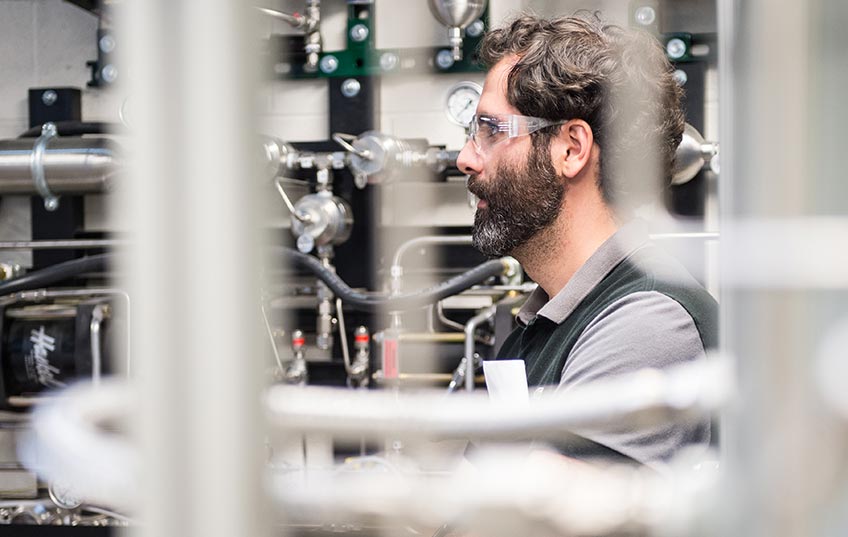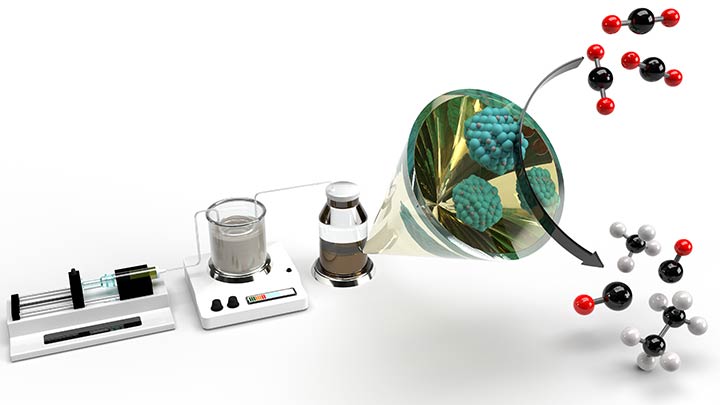Sustainably Converting Waste CO₂ into Hydrocarbon Fuels and Products
Researchers at the National Renewable Energy Laboratory (NREL) and the University of Southern California (USC) demonstrated a new process to synthesize metal carbide nanoparticles that may be used to convert waste carbon dioxide into hydrocarbon fuels or precursors to chemical products.

Metal carbides, like the molybdenum carbide nanoparticles developed by NREL and USC, are compounds of metal and carbon that are known for their potential in a wide range of catalytic applications like converting carbon dioxide to carbon monoxide or hydrocarbons for use as fuels or solvents or as raw materials to create plastics, rubber, and pesticides.
The new methods developed by the team of NREL and USC researchers to prepare these nanoparticles have the potential to enhance our understanding of metal carbides while paving the way toward their cost-effective and efficient production at industrial scales. Their findings were recently published in the Journal of the American Chemical Society.

Fine-Tuning Catalysts for Better Fuels and Products
The extreme conditions of carburization also limit the scope of synthetic control over the physical properties of metal carbides. This novel synthesis route may enable researchers to tune certain physical properties of their nanoparticles like composition, size, and morphology, resulting in improved catalytic performance.
"We hope that by continuing to develop more mild and controlled methods of preparing nanostructured carbide catalysts we can help to facilitate the commercialization and deployment of these exciting materials,” says lead author of the study and NREL scientist Frederick Baddour.
Full details on this research can be found in the article, titled "An Exceptionally Mild and Scalable Solution-Phase Synthesis of Molybdenum Carbide Nanoparticles for Thermocatalytic CO2 Hydrogenation."
Learn more about NREL's bioenergy research.
Last Updated May 28, 2025
